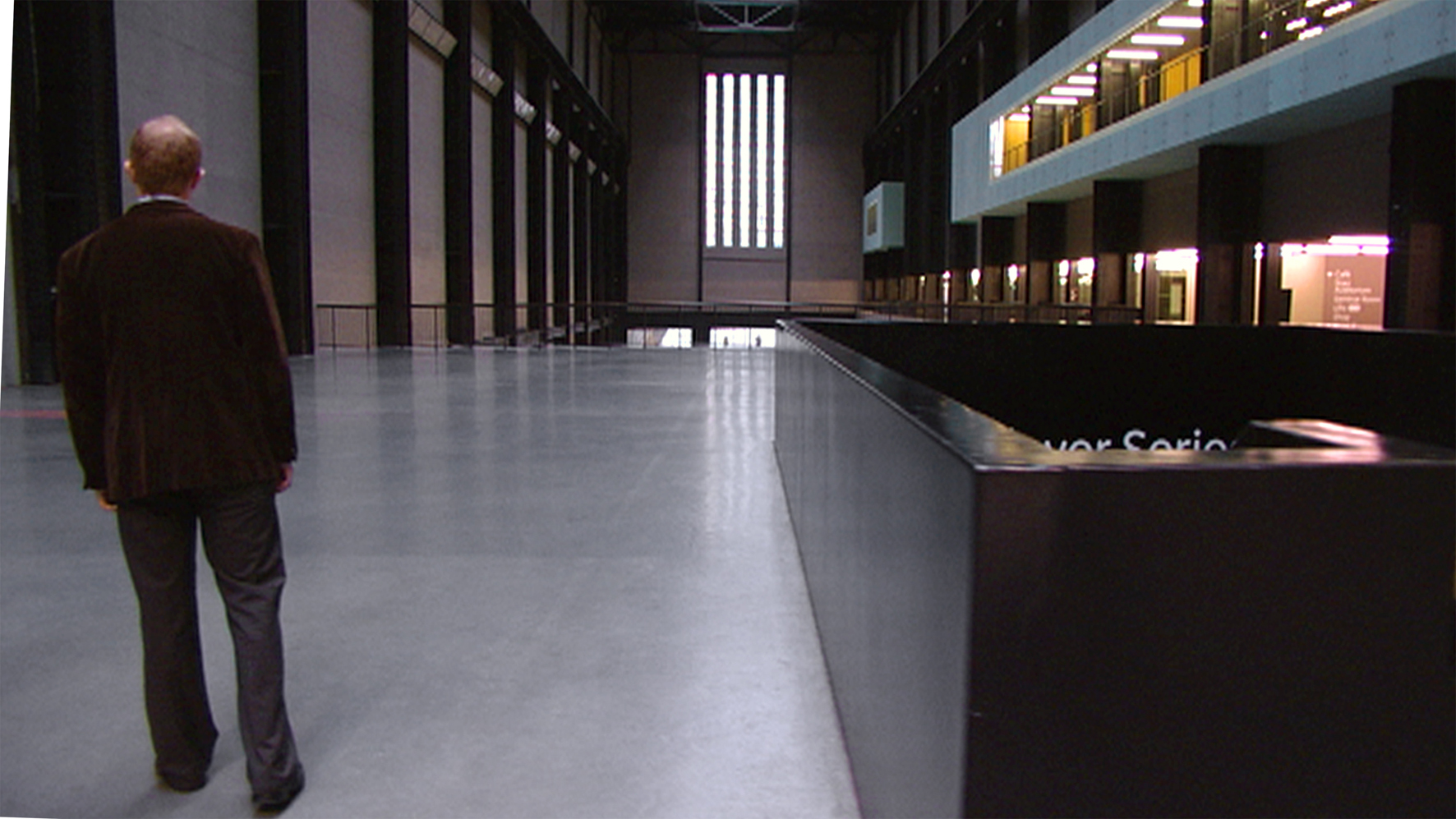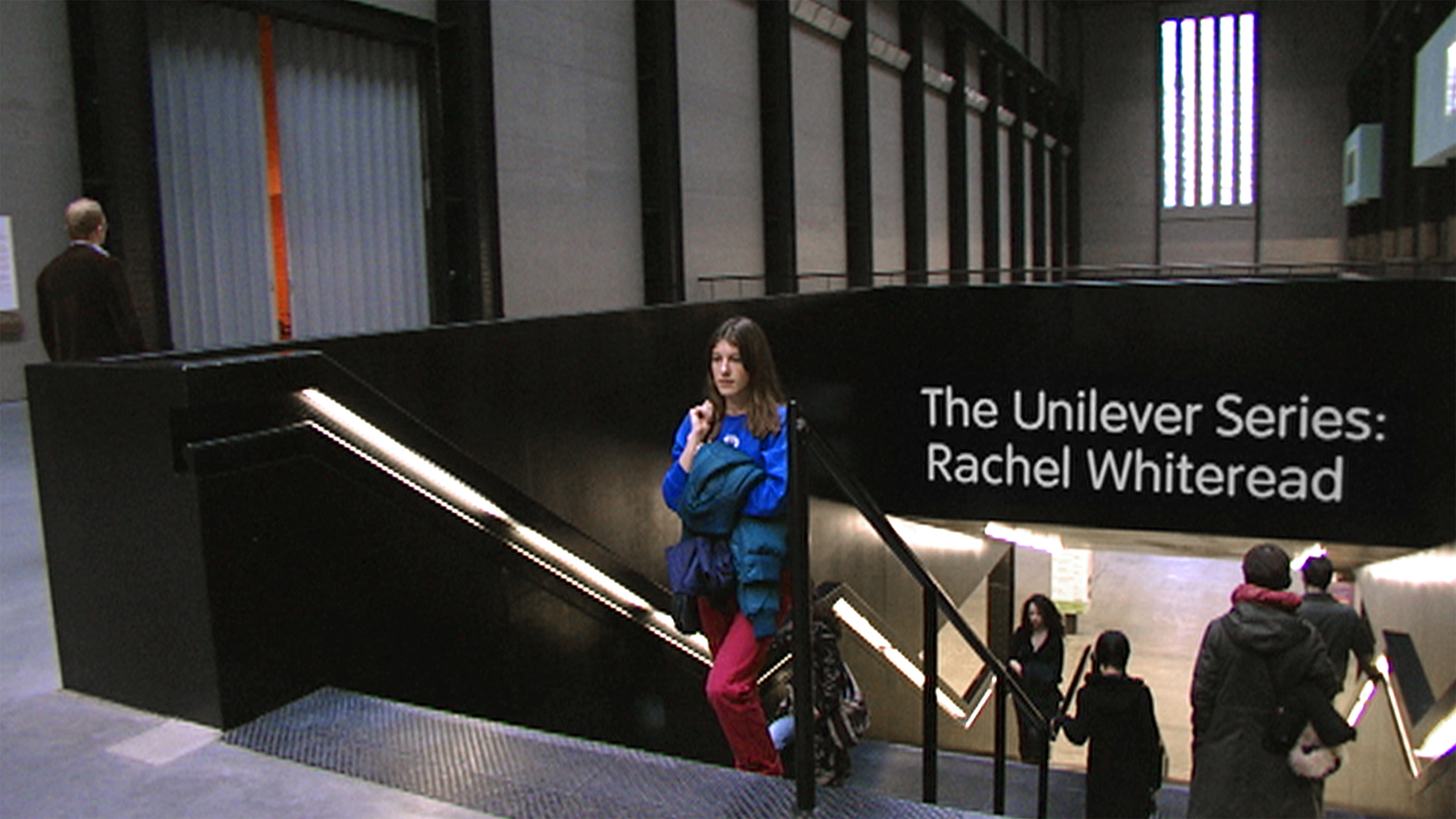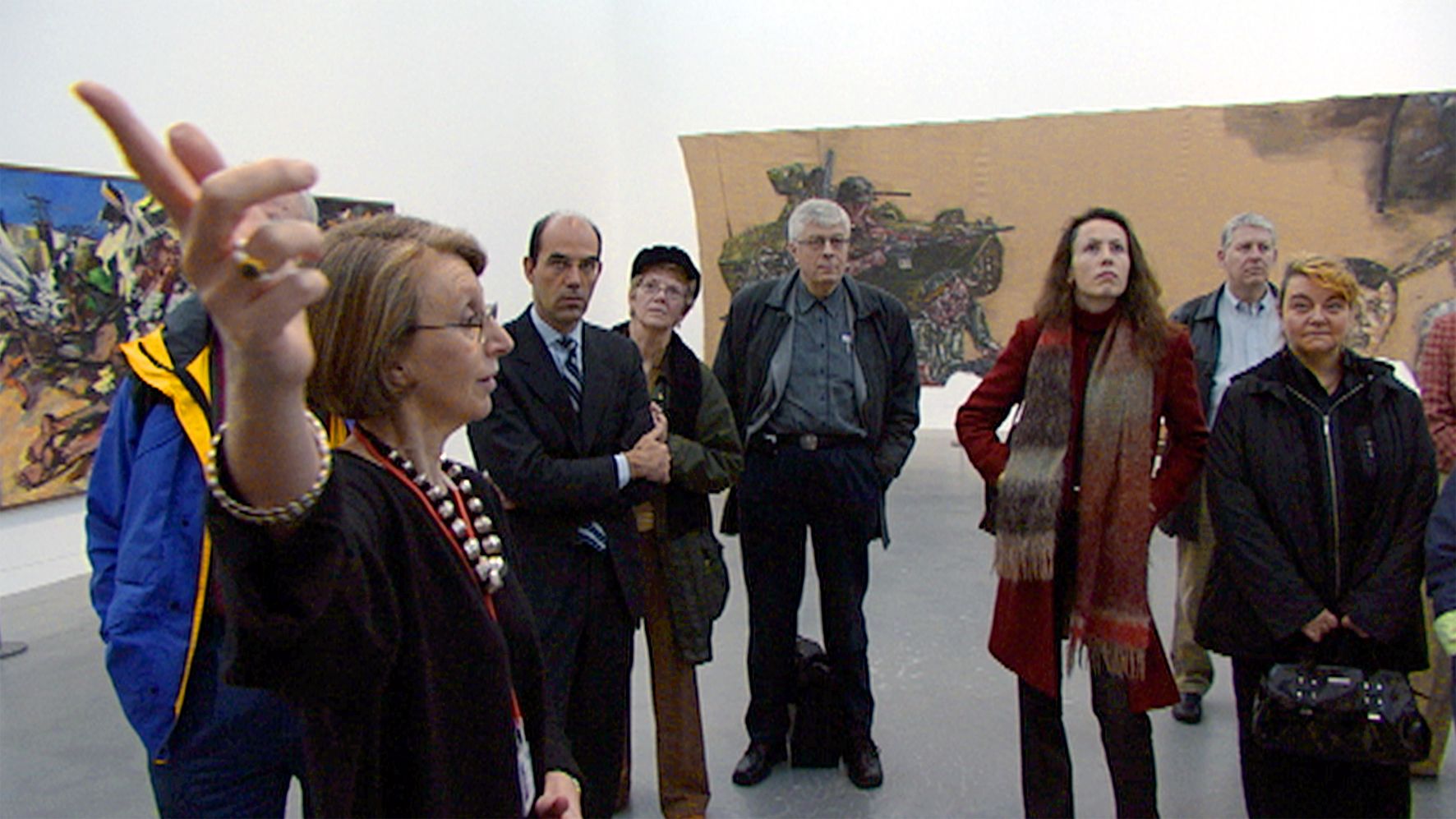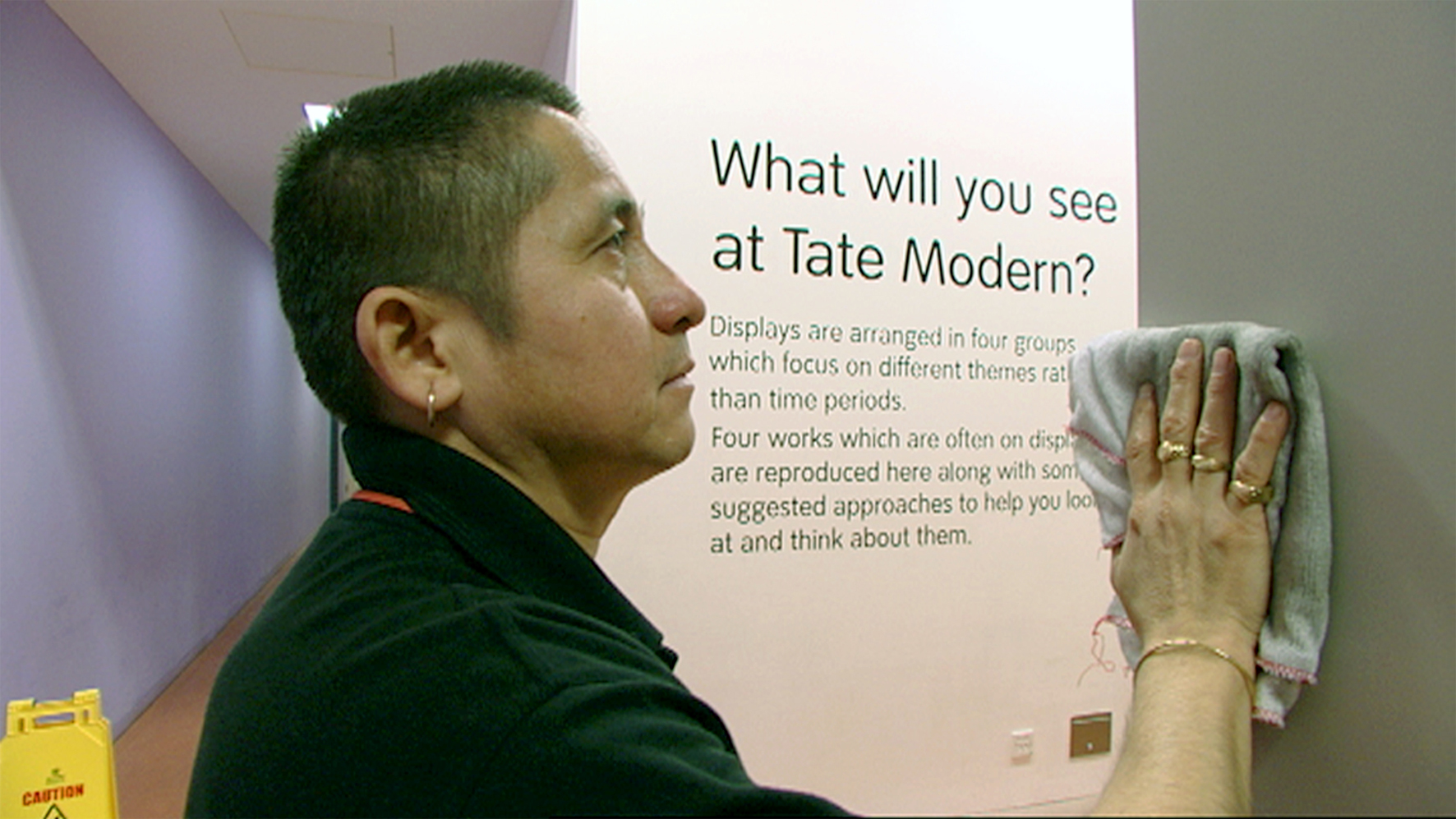Tate Modern , 2006
SECRET STRIKE
Performance of two thousand people at Tate Modern
‘Tate Modern is an icon of culture; exhibitions that take place in the museum have an impact on what happens in the rest of the Art World and also in the international art market. At the same time it is a place where performance is constantly taking place. I thought it was important to make a performance concerning the everyday life of this building and the people who work in it. We stopped in every floor, the ones that were open for public as well as the private ones. We worked with the employees and the visitors, who became a part of the performance. As we entered the culture of the Tate we saw it as a big machine of production and creativity at work. It is a place for art, that is theatrically prepared to open our emotions and our intellect. The film tries to show what is behind the walls of the Tate.’ -Alicia Framis
In Secret Strike the camera moves around the immobile figures and slowly approaches them in open-ended sequences of shots, which favour the transition from one space to another. The content of all the films received the same hierarchical treatment, similar photography and similar treatment of detail. Moves are slow and silent, as if the normality of the scene could be altered. Even when the human activities have been paralysed, time has not stopped. And there is plenty of evidence for this, which Framis deliberately intensified in the film footage: a flickering light, a telephone ringing, an automatic door opening, the steam from a machine and so on.




‘Tate Modern is an icon of culture; exhibitions that take place in the museum have an impact on what happens in the rest of the Art World and also in the international art market. At the same time it is a place where performance is constantly taking place. I thought it was important to make a performance concerning the everyday life of this building and the people who work in it. We stopped in every floor, the ones that were open for public as well as the private ones. We worked with the employees and the visitors, who became a part of the performance. As we entered the culture of the Tate we saw it as a big machine of production and creativity at work. It is a place for art, that is theatrically prepared to open our emotions and our intellect. The film tries to show what is behind the walls of the Tate.’ -Alicia Framis
In Secret Strike the camera moves around the immobile figures and slowly approaches them in open-ended sequences of shots, which favour the transition from one space to another. The content of all the films received the same hierarchical treatment, similar photography and similar treatment of detail. Moves are slow and silent, as if the normality of the scene could be altered. Even when the human activities have been paralysed, time has not stopped. And there is plenty of evidence for this, which Framis deliberately intensified in the film footage: a flickering light, a telephone ringing, an automatic door opening, the steam from a machine and so on.